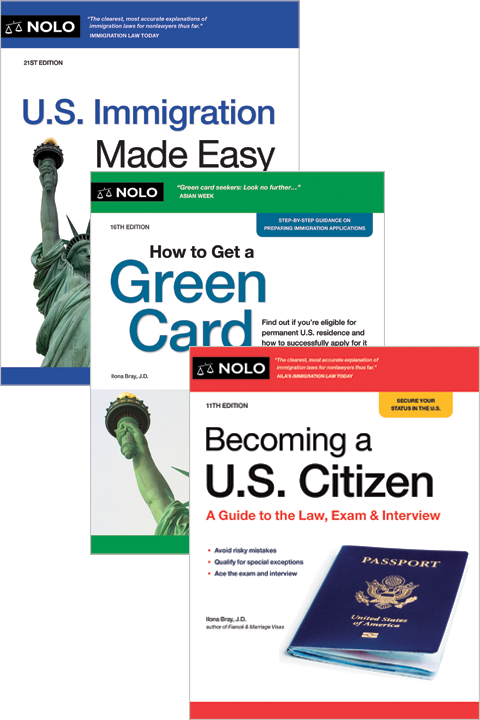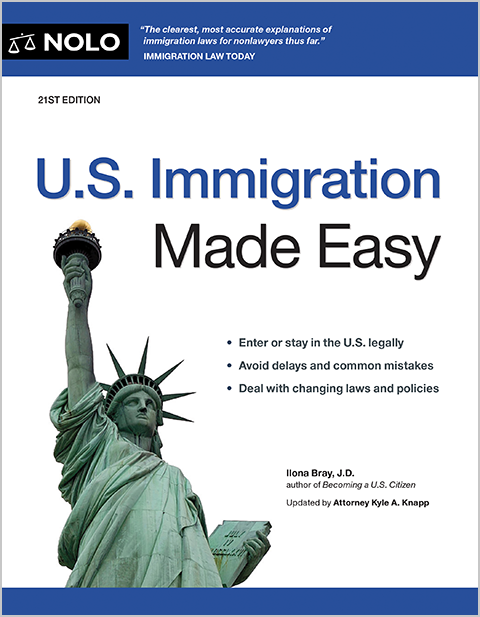Details on which countries' citizens can skip getting a B visitor or tourist visa and arrive in the U.S. using a visa waiver.
For most people who wish to visit the United States as a visitor for business, pleasure (such as tourism), or medical treatment, their first stop will have to be a U.S. consulate. There, they will need to apply for a "B" or visitor visa allowing one U.S. entry or multiple ones. However, you might be able to avoid this step, and basically go through a quick registration process before coming to the U.S., if you qualify for the Visa Waiver Program (VWP).
The VWP is also a useful option for foreign nationals who are simply changing planes in the United States, and would otherwise need to obtain an actual visa.
VWP Eligibility Criteria
In order to qualify to enter the U.S. on a visa waiver, you'll need to meet all of these:
- You come from a nation that is on the State Department's list of Visa Waiver Program (VWP) participating countries. These countries have agreements with the United States allowing easy travel back and forth, based in part on the country having a low rate of citizens violating U.S. immigration laws or overstaying their visas.
- You yourself have not violated the terms of any past nonimmigrant visa (for example, by staying in the U.S. beyond the time your previous permitted stays under a visa and I-94 expired), nor have you otherwise become inadmissible (for example, because you have contracted tuberculosis, abused drugs, or committed certain types of crimes or security violations).
- You would like to visit the United States for no longer than 3 months (90 days) as a visitor for either pleasure or business.
- You do not intend to stay in the U.S. permanently, whether legally or not.
- You will not be entering the U.S. via a private aircraft or other non-VWP approved air or sea carrier.
- You have not been present in the countries of traveled to or been present in the Democratic People's Republic of Korea (North Korea), Iran, Iraq, Libya, Somalia, Sudan, Syria, or Yemen on or after March 1, 2011 (with limited exceptions for travel for diplomatic or military purposes in the service of a VWP country), or any other country that DHS later designates as supporting terrorism or "of concern" at any time on or after March 1, 2011 (unless you meet an exemption based on performing military service in the armed forces of a VWP country or carrying out official duties in a full-time capacity in the employment of a VWP country government). The Department of Homeland Security (DHS) may lift this exclusion for reasons to do with U.S. law enforcement or national security interests.
- You have not traveled to or been present in Cuba on or after January 12, 2021 (with limited exceptions for travel for diplomatic or military purposes in the service of a VWP country).
- You are not a national of Cuba, Iraq, Iran, Sudan, Syria, or North Korea (even if you carry the passport of another, VWP-eligible country). To learn whether you are a "national" of one of these countries, you will need to research its laws. The most likely situation would be if you or your parents were born there.
If all the above things are true of you, you may skip applying for a visa, and enter the United States under the Visa Waiver Program (VWP). (Created by Section 217 of the Immigration and Nationality Act.)
You will want to weigh the advantages and disadvantages first, however. Even people from Visa Waiver countries sometimes choose to apply for a tourist (B-2) visa first, as it offers the possibility of a longer stay and other immigration-related protections.
How Long You Can Stay in the U.S. on a B-2 Visa Compared to on the VWP
If you enter the United States on a visa waiver, your maximum stay will be 90 days. With a B-2 tourist visa, by contrast, you would normally be allowed to stay for up to six months. What's more, with a B-2 visa, you can apply to extend your stay even longer. (See How to Extend Your Stay or Change Your Status While on a B Visa.)
What Rights VWP Entrants Give Up
People who obtain an actual B-2 tourist visa before they enter the United States will enjoy rights to:
- a hearing in front of an immigration judge of the Executive Office of Immigration Review (EOIR) if the U.S. government decides it wants to remove them (deport or send them home), and
- request an extension of their visit or a change to a different nonimmigrant (temporary) visa status, all without leaving the United States.
You don't receive these basic rights if you enter the United States using the Visa Waiver Program. The program is based on a simple concept: You can easily enter for a 90-day stay, but when those 90 days are over, the U.S. government will have an easy time insisting that you leave.
There are limited exceptions to this 90-day stay rule. If, for example a medical or other emergency arises, or if you fear persecution in your home country, you can request a longer stay from USCIS, or apply for asylum.
Also, if you become the immediate relative of a U.S. citizen (most likely by marriage, or because you are the minor unmarried child or parent of a U.S. citizen) you will probably be able to apply for a green card (adjustment of status) while in the U.S. on the VWP—on one condition. Applying for the green card cannot have been your original intent when you entered the United States under the VWP, or your false statements upon entry could disqualify you from receiving U.S. lawful permanent residence (a green card). Also see the caution on changing USCIS policy in this area in When Adjustment of Status Is Possible for the Immigrant Spouse of a U.S. Citizen.
VWP Entry Requirements
Although you can avoid making a stop at a U.S. consulate to get a visa, coming to the United States under the VWP does require advance preparation. You will need to:
- obtain a valid passport from your home country, with an expiration date at least six months past the end of your expected U.S. stay, as well as a scannable, electronic chip containing your biometric information (thus making it an an e-passport)
- buy a return ticket to your home country, or a ticket to some other foreign country, unless you will be arriving in your own vehicle
- apply for and receive authorization through the U.S. State Department's Electronic System for Travel Authorization (ESTA) prior to departing for your trip, and pay the ESTA fee (which authorization will last you for two years, in most cases)
- gather evidence that you have enough money to support yourself while in the United States without taking a job here, and
- paying a fee, if you arrive at a land border.
You'll also need to comply with U.S. health and vaccination requirements applicable to nearly all non-citizens.
Answering Questions at U.S. Border or Port of Entry
When you arrive in the U.S., the Customs and Border Patrol (CBP) officer will take a look at your various documents. The officer will see whether your name shows up in an electronic database indicating that you have overstayed any past visas or have a history of criminal, espionage, or terrorist activity.
CBP officers have the power to deny any person entry to the United States if they are not satisfied that the traveler fits the criteria for entry and is admissible. They can insist that you return home immediately, without a court hearing or other second opinion. (Learn more about what to expect at the U.S. entry point or border.)
People who enter on tourist visas run this same risk upon entry. At least they, however, have given their application for entry a "trial run" past a U.S. consular official, who would probably have spotted the same issue and denied the B-2 visa right then, thus saving them a long trip to the United States.
There is one good thing about being denied U.S. entry as a Visa Waiver entrant: You can still come back to the United States at any time, and again request U.S. entry. That's different than many people who arrive with visas, who have to wait five years if refused U.S. entry. However, you would still have to leave the United States before returning.
Talk to a Lawyer
Need a lawyer? Start here.
How it Works
- Briefly tell us about your case
- Provide your contact information
- Choose attorneys to contact you
- Briefly tell us about your case
- Provide your contact information
- Choose attorneys to contact you

